John Hurrell – 24 April, 2011
There is another notion of Subject as Attribute that is supported by the Buddha and two works by Gunter Umberg and Ann Hamilton. Umberg's velvety black panel appears to be a deep soft void, suggesting an infinitely extended, bottomless hole. Ann Hamilton's own photographed physiognomy dispersed and fragmented, a floating broken surface with only a vague core.
Auckland
Nauman, Oursler, Rae, Umberg, Harrison, Hamilton, Knoebel
Subject as Object: Considering Portraiture
22 March 2011 - 22 April 2011
If we are talking about portraiture, probably my all-time favourite portraitist is Francis Bacon, and as far as living practitioners go, I go for Mike Parr, for his anamorphic self portrait charcoal drawings of the mid-eighties, and Jim Nutt for his painted imaginary Miroesque physiognomies. I worship the ferocity, wild exuberance and sheer inventiveness of these artists, their unrelenting nerve, so when I visit a show like this one at Jensen, it needs to be very special indeed if I’m not to topple over yawning.
Here at Jensen there are five items from five artists for sale (most from the gallery stable) plus three extra works that are borrowed from collectors. Plus one painting that is in both ‘artist’ and ‘collection’ categories. Nine works total.
Dominating the gallery space is a striking bronze statue from Myanmar (Burma) of a Buddha standing on a lotus leaf. When it is prayed to, it is understood that the addressed recipient is not any god or God (the notion of God is irrelevant) or even the historical Gautama Buddha. Rather it is the ‘Buddha-nature’ deep inside the person doing the praying that is being spoken to, an attempt to draw up from within themselves certain qualities.
Although the exhibition is entitled Subject as Object, this other notion of Subject as Attribute is supported by two works by Gunter Umberg and Ann Hamilton. Umberg’s outward projecting, velvety black panel appears to be a deep soft void, suggesting an infinitely extended, bottomless hole - like something made by Anish Kapoor. Ann Hamilton’s image is the opposite extreme: a photograph of her facial features broken up by a reflective rippled plate of glass that you look at and through. Her physiognomy is dispersed and fragmented, a floating broken surface with only a vague core.
Jude Rae has a painting of a man sitting at his desk, looking at his cell phone, reading a text. It’s an orthodox craft-based example of the genre, capitalising on the late afternoon light but made more intriguing by the fact that his diverted concentration seems to be the subject matter, his distraction the portrait’s content. The reference to modern technology introduces interest.
One particularly innovative work is from Imi Knoebel, contemplating surface. He has a rectangular portrait of Grace Kelly on five thick interlocking blocks, a constructivist abstraction of five tints - pink, two greys, brown and pale yellow - derived from a coloured photograph. This very elegant painting seems to be based on make-up colours and a background wall and ceiling, and references cosmetics while alluding to underlying psychological complexity.
The exhibition’s highlight comes from Tony Oursler, behind the end wall and under the stairs, jammed in a corner - a projection from 2007 on two fibreglass forms butted together, a squat oval white shape on top of a fat banana-like, purple one.
It’s a sort of duet for two voices. A stack of two faces, each with large independently revolving eyes, grimacing black lips and yellow teeth, whisper and sing in unison. One mutters darkly while the other whines in a bored vacuous tone a Beckett-like commentary such as “You’re just a normal person, yes? You’re just a normal person, no? It is happening again and again. It’s common. Go there in your mind. Open, open up.”
John Hurrell
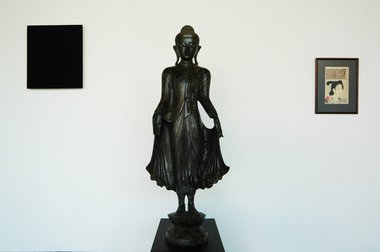
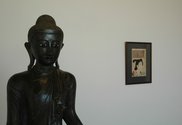
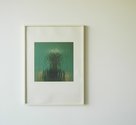

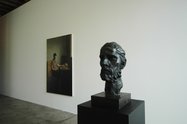
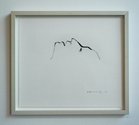
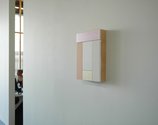
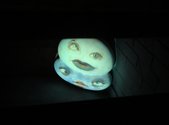
 Advertising in this column
Advertising in this column Two Rooms presents a program of residencies and projects
Two Rooms presents a program of residencies and projects



This Discussion has 0 comments.
Comment
Participate
Register to Participate.
Sign in
Sign in to an existing account.